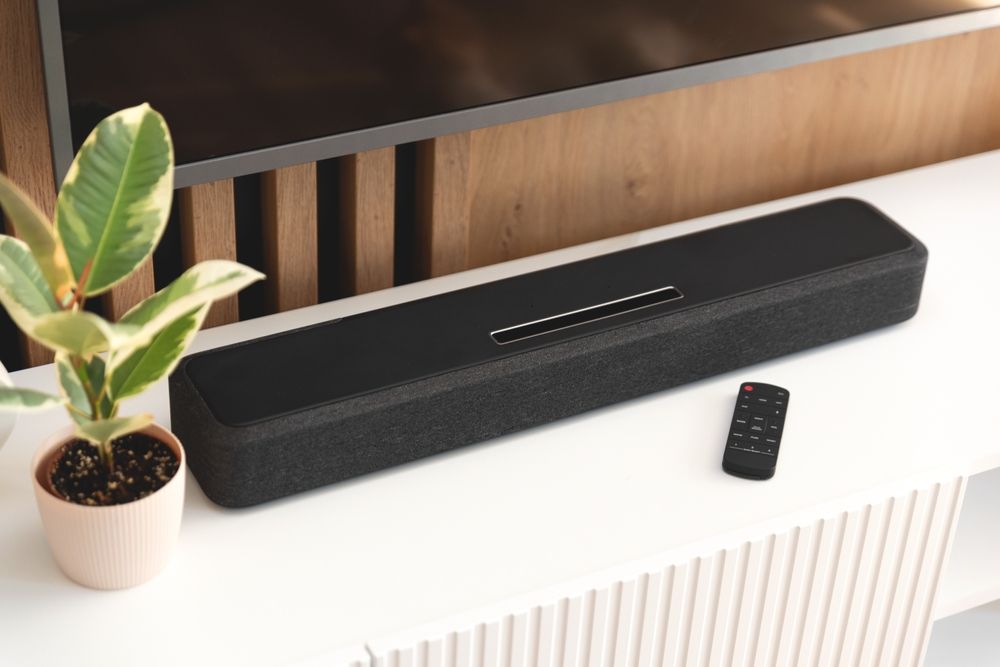A soundbar is one of the easiest and most affordable ways to upgrade your home entertainment experience. With TV speakers often lacking in depth and clarity, especially when it comes to dialogue or bass, a well-chosen soundbar can make your favorite movies, shows, and music sound dramatically better.
But not all soundbars are created equal. From audio quality to connectivity and room size, there are several factors that can affect which model is right for your setup. Rushing into a purchase could leave you with something that doesn’t meet your needs — or worse, ends up unused.
Before you buy, here are the most important things to consider so you get the best value and sound for your space.
1. Understand Your Audio Goals
Start by identifying what you want from your soundbar. Are you upgrading from poor TV speakers? Looking to enhance dialogue clarity? Want deep, booming bass for action scenes? Or do you want a compact, all-in-one solution for background music?
Your answer will help narrow down options. For example:
-
For clear dialogue: Look for soundbars with a dedicated center channel or speech enhancement modes.
-
For immersive movie sound: Consider models with virtual surround sound or Dolby Atmos.
-
For simple upgrades: A 2.0 or 2.1 channel soundbar might be enough for casual users.
-
For gamers or audiophiles: Check latency performance and audio customization features.
Knowing your audio priorities helps you shop with clarity and avoid overpaying for features you won’t use.
2. Check the Soundbar Size and Design
Soundbars come in a variety of sizes and designs. While sound quality is the priority, you also want something that physically fits your space and looks right in your room.
Consider:
-
TV width: Your soundbar should generally match or stay within your TV’s width.
-
Placement options: Will it sit in front of your TV, on a shelf, or be mounted on the wall?
-
Wall clearance: Wall-mounted soundbars need rear spacing for ports and airflow.
-
Aesthetic match: Choose a style and finish that complements your existing setup.
A great soundbar should blend in visually while standing out acoustically.
3. Know the Channel Configuration
The number of channels in a soundbar affects how sound is distributed. Common configurations include:
-
2.0: Two speakers (left and right) — basic but better than TV speakers
-
2.1: Adds a separate subwoofer for improved bass
-
3.1: Includes a center channel for clearer dialogue
-
5.1 and above: Adds rear and surround speakers for immersive sound
-
Dolby Atmos / 5.1.2 or 7.1.4: Includes upward-firing speakers for 3D audio effects
For smaller spaces or basic needs, 2.1 is usually enough. For larger rooms or more cinematic experiences, go for 3.1 or higher.
4. Consider Whether You Want a Subwoofer
Subwoofers handle the low-end frequencies that make explosions boom and music feel full. Many soundbars include wireless subwoofers that can be tucked in a corner or under a couch.
Pros of having a subwoofer:
-
Deeper bass for action scenes and music
-
Less strain on the main soundbar speakers
-
More immersive overall sound
If you want punchy bass or plan to use your soundbar for music as well as TV, choosing a model with a subwoofer is worth it.
5. Evaluate Connection Options
Check the soundbar’s input and output options to make sure it works with your current devices. Common connections include:
-
HDMI ARC / eARC: Allows audio to pass through your TV to the soundbar with high quality
-
Optical (TOSLINK): Good digital audio, widely compatible
-
Bluetooth: For wireless streaming from your phone or tablet
-
Wi-Fi: Enables multi-room audio and smart speaker features
-
3.5mm AUX or RCA: For connecting older devices or simple setups
HDMI ARC or eARC is ideal for modern TVs and offers the most convenience and audio performance.
6. Check Compatibility with Your TV
Not all soundbars are fully compatible with every TV. Before buying, confirm:
-
Your TV has an available HDMI ARC, optical, or audio out port
-
The TV remote can control the soundbar (via HDMI-CEC or infrared passthrough)
-
There are no issues with mounting or blocking the TV’s infrared sensor
Some TVs are optimized for soundbars from the same brand, but this isn’t a requirement — just be sure ports and controls will work together as expected.
7. Look for Smart Features if Needed
Many soundbars now come with built-in smart assistants like Amazon Alexa, Google Assistant, or Apple AirPlay support.
Smart features can include:
-
Voice control for volume, inputs, or music playback
-
Integration with smart home routines
-
Streaming music services directly from the soundbar
These are great for tech-savvy users or those who want to reduce the number of devices in the room. Just note that smart soundbars often come with a higher price tag.
8. Pay Attention to Audio Formats Supported
If you stream content in high definition or watch Blu-ray discs, look for support for audio formats like:
-
Dolby Digital / Dolby Digital Plus
-
DTS or DTS:X
-
Dolby Atmos
These formats provide clearer, more immersive audio. Not every soundbar supports them, and not every piece of content uses them — but having support helps future-proof your purchase.
9. Test the Remote or App Controls
Good controls make a big difference in how often and how easily you use your soundbar. Check:
-
Whether it comes with its own remote
-
If volume/mute can be controlled with your TV remote
-
If there’s a mobile app for deeper settings (like EQ adjustment or audio modes)
User-friendly controls — especially for households with multiple users — make everyday use simpler and more enjoyable.
10. Set a Realistic Budget
Soundbars are available at nearly every price point, from under $100 to over $1,000. While high-end models offer premium features, you don’t need to spend a fortune to get excellent sound.
Set a budget based on your priorities:
-
Under $200: Great for small rooms and basic TV audio upgrades
-
$200–$500: Best value range for strong audio quality and useful features
-
$500+: Ideal for premium setups, large spaces, or advanced formats like Atmos
Don’t overpay for features you won’t use — but also avoid underbuying if you want sound that truly transforms your experience.
A soundbar can instantly elevate your audio experience, but buying the right one means thinking beyond just price or brand. By considering your room size, listening habits, connectivity needs, and overall expectations, you’ll be better equipped to make a smart choice.
Whether you want a simple audio boost for your TV or a full cinematic feel in your living room, the right soundbar is out there — and with a little research, it can become one of the best tech upgrades in your home.



